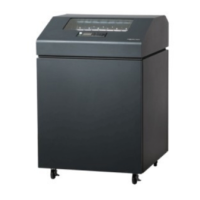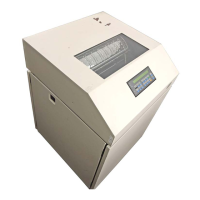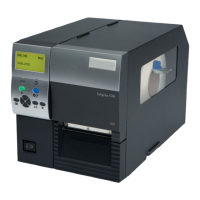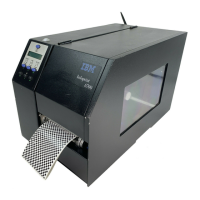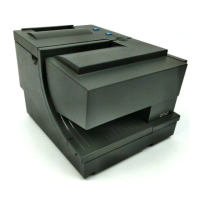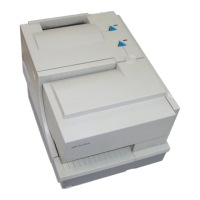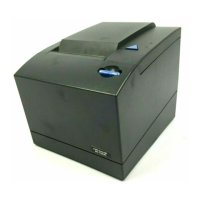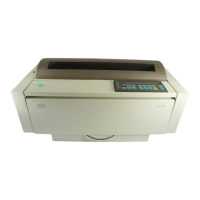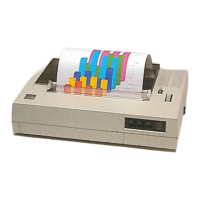PC Parallel Interface Signals
Data Lines 1 through 8. Provides eight standard or inverted levels from the host
that specify character data, plot data, or a control code. Data Line 8 allows access
to the extended ASCII character set. You may enable or disable this line via the
Data Bit 8 parameter on the Centronics submenu.
Data Strobe. Carries a low true, 100 ns minimum pulse from the host that clocks
data into the printer.
Paper Instruction (PI). Carries a CVFU signal from the host with the same timing
and polarity as the data line.
Acknowledge. A low true pulse from the printer indicating the character or
function code has been received and the printer is ready for the next data transfer.
Online/Select. A high true level from the printer to indicate the printer is ready for
data transfer and the Start key on the operator panel has been activated. When the
printer is in Ready mode, it may accept data from the host.
Paper Empty (PE). A high true level from the printer to indicate the printer is in a
paper empty or paper jam fault.
Busy. A high true level from the printer to indicate the printer cannot receive data.
PC Parallel Interface Configuration
Your printer is configured at the factory to match the interface you specified. By
using the operator panel, you may verify and change several interface parameters
to meet specific application requirements.
Refer to “PC Parallel Menu” on page 129 for PC Parallel parameter descriptions
and information on selecting values for the following parameters:
v Data Bit 8 (enable or disable)
v Data Polarity (standard or inverted)
v Strobe Polarity (standard or inverted)
v Response Polarity (standard or inverted)
v Busy on Strobe (enable or disable)
v Latch Data On Leading or Trailing Edge of Strobe
v Prime Signal (enable or disable)
v TOF Action at Prime Signal (do nothing or form feed)
v Buffer Size in kilobytes (1 to 16)
Some
application programs require a unique configuration. If the printer is not
working properly in the configuration you have selected, contact an IBM service
representative.
Chapter 5. Printer Interfaces 211
